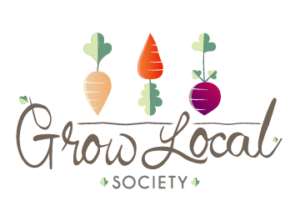It’s ironic that when we discuss sustainable agriculture, it looks very much like the system farmers practiced prior to World War II. The industrialization of agriculture is a relatively new occurrence. In the post-war period chemical and armament manufacturers applied their skills to producing fertilizers, pesticides, and farm machinery. While crop yields increased, the specialization in single crops, or monoculture, became an accepted farming practice. The specialization extends to animal production as well, and industrialization has had a profound effect on the environment.
National Geographic cites a number of costs associated with this type of food production: “erosion; depleted and contaminated soil and water resources; loss of biodiversity; deforestation; labor abuses; and the decline of the family farm.”[1] Sustainable agriculture, on the other hand, includes farming practices that reduces pesticide use, conserves water, and requires less tilling.
An excellent local example shows how habitat enhancement and sustainable agriculture can be viewed as supportive activities. Cover crops are currently used on several Delta farms through a stewardship program offered by the Delta Farmland and Wildlife Trust. Winter cover crops “provide feeding habitat for herbivorous waterfowl and shorebirds, protect the soil from erosion due to heavy winter rain, scavenge excess nutrients like nitrogen before they leach from the soil, and increase organic matter in the soil, thereby improving soil structure.”[2] Farmers are also encouraged to plant hedgerows and natural grass borders that attract pollinators and other wildlife.
Consumers have an important role in building a sustainable local food system. By supporting farms that are managing the soil, conserving water, and reducing their use of pesticides, they are encouraging a more sustainable food system. Purchasing meats and poultry that have been ethically treated, makes a statement that you place value on food that is raised in a sustainable fashion. Farmer’s markets provide significant benefits to consumers that are looking for information on how their food is raised or grown. They can make those social connections with the farmers and learn about their production methods.
Policies that promote urban agriculture, local processing, and food waste reduction contribute greatly to a sustainable local food system. Community gardens are being built throughout the region, and the demand for plots far exceeds supply. Workshops on organic gardening, cooking and food preservation are offered by agencies and non-profit organizations, often at no charge. Municipalities are incorporating food policies into their land use planning, and some are extracting benefits such as community garden plots from developers.
We’ve come a long way in fostering sustainable agricultural practices, but still have a long way to go. If you’d like to learn more about sustainable agriculture, the University of California-Davis Sustainable Agriculture Research and Education Program (SAREP) has a great web site on the subject. A current initiative of Kwantlen Polytechnic University’s Institute for Sustainable Food Systems provides a local example of a bio-regional food systems research project.
Shopping at our farmer’s market is an excellent way of supporting sustainable agriculture.
[1] http://environment.nationalgeographic.com/environment/habitats/sustainable-agriculture/
[2] http://www.deltafarmland.ca/subpage/our-programs/winter-cover-crop-stewardship-program/
